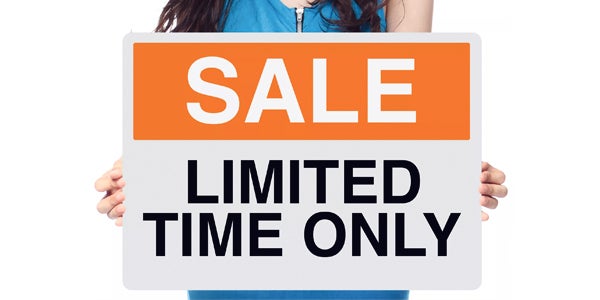Inflation has had a significant impact on businesses and this can lead to a financial stress. However, it is possible for businesses to increase buyer traffic and boost sales even in times of market chaos by employing strategic product and service bundling. Read more here.
To combat inflation and slow spending, the US Federal Reserve recently announced the fourth interest rate hike of 2022. Raising interest rates by another three-quarter of a percentage point—after just doing so in June, marking the most significant rate hike in 22 years—will generate even wider ripple effects throughout the economy.
Inflation has impacted businesses and consumers alike, causing both to make hard choices. However, higher interest rates (with more increases on the horizon) can also cause financial distress. When loan interest rates rise, consumers and businesses rethink plans to buy big-ticket items or expand businesses. This drives sales to slow and goods to accumulate.

In theory, this manipulation of costs drives down inflation; in practice, it can create negative business impacts along the way. What strategies can your business implement to reduce the cost of goods sold and help your bottom line?
Bundle Products and Services to Increase Sales
The combination of rising interest rates and price fluctuations can catch unprepared businesses off guard. Strategies like product bundling can help businesses keep sales up even as actual costs fluctuate wildly in this period.
The idea behind product bundling is simple: combine two or more products or services into one package. You might sell these items together as a convenience or with a discount; the goal is to encourage customers to buy more products. Keeping sales of products and services up by bundling can reduce the actual cost of goods sold on the business end, keeping you afloat until the inflationary and interest rate tides settle.
The Benefits of Bundling Products
Bundling is a win for both customers and businesses. Selling more than one product simultaneously increases revenue by enhancing your average order value. Product bundling can also save marketing time and costs by limiting the amount of marketing investment to help drive sales. Bundling can also help:
- Generate faster sales. Bundling reduces the time for customer decision-making. Offering two related products together—whether with a discount or not—helps buyers to access what they need quickly. Too much decision-making time can result in customers buying fewer products (or none at all).
- Reduce inventory. Packaging slow-moving products at a slight discount can help move those items out of your stockroom. You can also bundle excess stock with more popular products; this works exceptionally well if the items are related in usage or brand.
- Entice customers to try new things. If you have a product that customers aren’t familiar with, bundle it with something they already know to expose them to new offerings.
- Take advantage of seasonal demand. Holidays and seasonality can create opportunities to bundle products or services to draw in customers. Seasonal bundles urge customers to buy now before they miss out.
- Reducing shipping costs. Bundling reduces overall shipping costs since items are sent out in bulk.

Unpacking Bundling Strategies
Building a bundle in these uncertain times can prove an attractive business strategy to reduce the cost of goods sold. But there’s a wide range of options for bundling your products! How might you want to shape yours? Let’s look at a few different ways to package items.
Product and Service Bundles
Generally, if you’re rolling out a service, there’s some partner product you can sell alongside. Bundle this combo together to simplify things for the customer.
For example, new software could come with a support contract. New vehicles for your company fleet or new replacement machinery could be bundled with a service contract at a total price or slightly discounted.
Pure Bundles
Use pure bundles to cultivate exclusivity—these are great for limited or rare products since you can only purchase them in this combination. If you sell items that might pique collectors’ interests, pure bundles can help boost sales in fluctuating times.
New Product Bundles
Sometimes specific brands will launch new products in limited quantities. Tech suppliers often do this with new consoles and old and latest software bundles.
Mix-and-Match Bundles
This allows customers to select multiple products and services from specified options and create bundles. The most classic example of this is the mix-and-match meal combo at a restaurant; however, businesses can also use this strategy by offering service or product lists to other businesses, wherein the buyer selects three (or more) items from a list for a specific price. This allows for buyer choice but encourages buying in bulk.
Cross-Sell Bundles
Unlike grouping products from the same brand, cross-sell bundles group items from different brands, vendors, or product categories. For example, when selling a fleet of computers, you can add ancillary items such as cables, adapters, laptop stands, external hard drives, or even extra monitors. These may all come from different manufacturers, not just the company that made the computer. This helps you maximize vendor relationships.
Inventory Clearance Bundles

These bundles can combine multiple slow-moving inventory items—or a slow-moving item and a popular one, such as a standing computer desk with a monitor. This clears inventory space, reduces holding costs, and creates revenue.
Buy-One-Get-One-Bundles
BOGO bundles are often buy-one-get-one 50% off or free. This strategy is often used to clear inventory but can also increase average order value (AOV).
Don’t Let Rising Rates Hurt Your Business
Businesses can increase buyer traffic and boost sales even in times of market chaos by employing strategic product and service bundling. Increased interest rates and inflation combined have businesses and buyers carefully assessing their next investment.
While strategic planning like bundling can reduce the cost of goods sold, it’s important to have a comprehensive understanding of your finances before you make adjustment. That’s why having a true financial partner like Arizona Bank & Trust, a division of HTLF Bank by your side in these uncertain times is essential. Contact Arizona Bank & Trust, a division of HTLF Bank today to speak with a representative who can help you navigate your business’ future.









